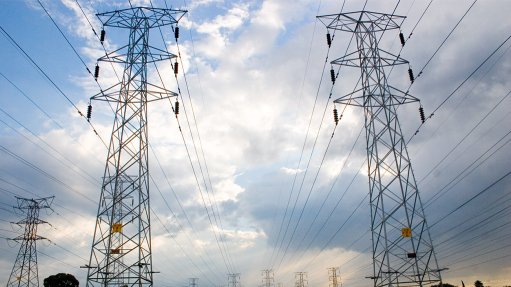
Photo by: Duane Daws
While coal would not be abandoned as an energy source for generating electricity, South Africa was increasingly moving towards a more diversified energy mix, Department of Energy deputy director-general Ompi Aphane said on Thursday.
Eskom sustainability group executive Dr Steve Lennon added that South Africa had to change its energy mix, and that the country’s energy future lay in many different spaces.
“While we do believe that coal will be the anchor of our power sector for at least another 20 years, the role of coal will change over time,” he told Engineering News Online on the sidelines of the South African Chamber of Commerce and Industry (Sacci) 2013 Annual Convention.
Speaking at the convention, held in Midrand, Aphane said that, given the country’s vast coal resources, government was determined to find cleaner coal technologies that could reduce the adverse environmental impact associated with greenhouse-gas emissions.
He further stated that potential energy sources, such as shale gas and solar energy, provided the country with opportunities that could not be ignored.
“South Africa is entering a most exciting energy era. It is exciting because indications are that, from a national and Southern African regional perspective, we might become energy independent in all respects, with less reliance on imported fossil energy, by introducing clean energy options locally and through regional economic integration,” he said.
Aphane added that the development of shale gas could not be put aside as a result of the environmental concerns associated with the process of extracting the gas.
“It would be irresponsible of us not to pursue the development of shale gas, given our socioeconomic challenges,” he said, adding that, given the estimated resource size, shale gas could represent another resource boom for South Africa similar to the gold rush about two centuries ago.
Lennon agreed, stating that unconventional gas could change the face of South Africa’s energy sector, and might even replace, or at least complement, coal as the country’s main energy source.
Meanwhile, Aphane stated that South Africa’s solar resource was among the best in the world, rated only behind countries such as Chile.
“One cannot ignore South Africa’s renewable-energy resources, in particular solar,” Lennon added.
He said solar power had significant potential if it was to be used to power individual buildings.
Lennon added that Eskom had established a linear Fresnel reflector system at its research and development centre that was being used for water heating.
“We are looking at using that to complement our coal-fired power stations, because if water for a coal plant is preheated, the plant will be more efficient.
“In effect, we are looking at how to combine coal and renewable energy,” Lennon explained.
Aphane further pointed out that nuclear power also featured centrally in the country’s future energy mix, given the emissions reduction target we have set ourselves, and the possibility of catapulting South Africa into the top echelons of the knowledge economy.
“Our plan is to introduce some 9.6 GW of nuclear energy in the next decade, in addition to running the Koeberg power station,” he said, pointing out that issues relating to the financing of the nuclear programme were being dealt with.
He concluded that collaboration between government and business was critical for South Africa to achieve its energy objectives.
“Foreign direct investment, technology partnerships, skills development and local economic development through localisation are joint responsibilities that government alone cannot shoulder,” he said.